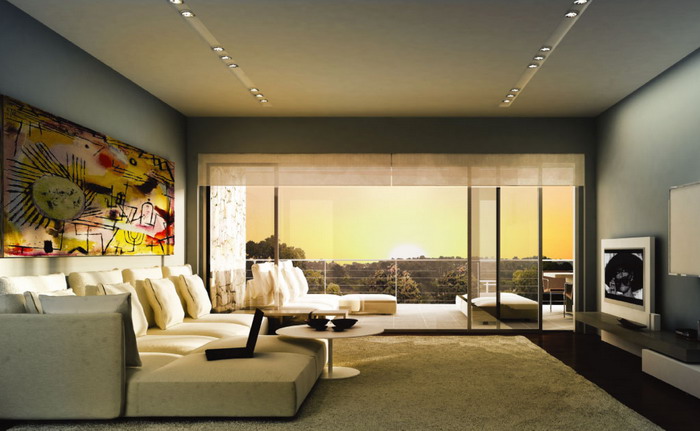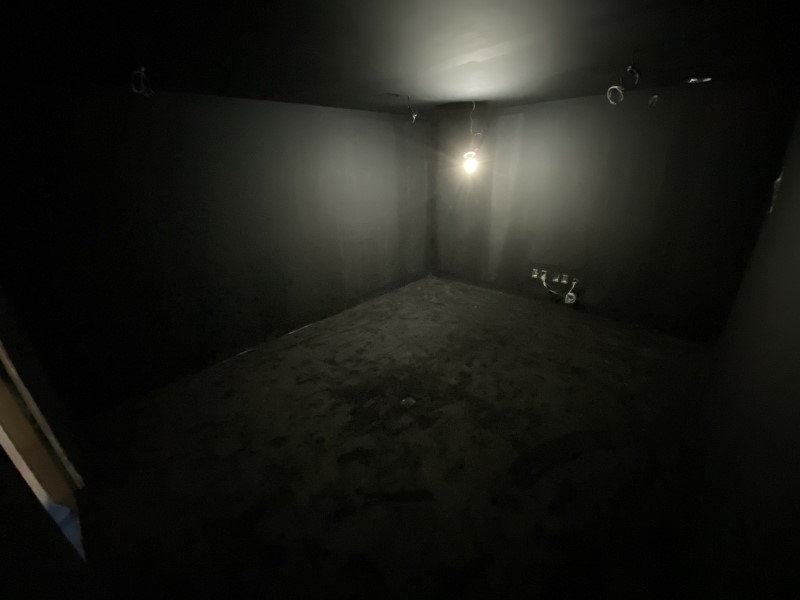More Terrible Reasons for Buying (or Not Buying) AV Gear – TV Edition (Part 2)
As promised, here is our part two of terrible reasons people buy (or don’t buy) a TV. This one will mostly focus on projectors but there is some TV stuff in there as well.
Not Buying a Projection Because of Windows
There are a lot of things to consider when buying a projector. Cost is usually a big factor. What size screen to get is up there. Even what type of screen can play a role. While projectors are slowly losing the “big picture” war to flat panels, they still can give you the largest image for the least amount of money. If you want a 120″ screen, you can spend a couple of thousand on a projector and a screen, or Elon Musk money on a flat panel.

What hurts is when someone says they can’t do a projector because they have windows. There are a lot of terrible reasons to not buy a TV or projector, a window shouldn’t be one of them. And I’m not talking about, “My room has floor to ceiling windows.” I’ve heard people use any amount of light as a reason they can’t have a projector.
I’ve owned a projector for years and I can say, with experience, that blackout curtains are cheap and effective. If your room is bathed in light all day, you certainly should buy a flat panel. But if you mostly watch at night, or have the ability to hang a curtain or two, you shouldn’t take projectors off the table. You don’t need 100% light control to get a great image from a projector.
Buying a Grey or ALR Screen in a Dark Room
This one drives me crazy. Grey screens are touted as enhancing black levels. This is true when they are in lighted environments (see above). But it is at the expense of overall brightness. That’s a tradeoff you have to make. ALR (Ambient Light Rejecting) screens are also useful in lighted environments. As the name suggests, they reject light from all but one direction. In a home theater with windows on the sidewalls, you might get an ALR screen that only reflects light that comes from directly in front of it. These can be very good solutions for rooms with no light control.

What doesn’t make sense is putting one of these screens in a room that has light control. The grey screens may help with black levels, but they are totally unnecessary in a room with light control. If you can turn the lights off and the room is totally dark, how much more dark is your grey screen? Zero is the answer. Zero more dark. Plus, the reduced light output will kill any ability your projector may have to show HDR effectively.
ALR screens make even less sense. Sure, they can be impressive in high-light rooms, but in dark rooms they are useless. Not only is there no ambient light to reject, but they can introduce image issues like hot-spotting. If you have light control, all you need is a regular white screen. Everything else is either useless or actively making your image worse.
Giving In To Your Fears When Shopping
How many times have you heard this terrible reason for not buying a TV: “I was going to buy X, but then I heard that it has problem Y so I bought this other one instead.” This indicates a couple of things. First, the person did their research and settled on what they thought was the right TV for them. Then, at the last minute, someone (either in person or online) said something that made them question that decision. So, at the last minute, they bought something else they probably did very little research on. Does this sound like a good idea to you?

There are a couple of likely culprits. Off-axis viewing angles, burn-in, image retention, and others. Like with all fears, the way to fight them is to really understand them. You must do your research before you shop. But beyond that, you need to be very thoughtful about your actual usage. Are you a hardcore gamer that plays the same game for hours at a time? Do you watch the same news station all day long? Image retention and burn-in certainly can be a problem for you. Do you sit, or have often used seats, far off to the side? Then you might want to shop based on off-axis viewing angles.
But if you aren’t these people, you really don’t need to worry about it. In fact, when you did your initial research into what to buy, you didn’t consider these “solutions.” Why? Because you are unlikely to have the problem! A solution without a problem isn’t worth changing your mind.
Chasing the Latest and Greatest
“Hey,” you think. If you are going to buy a projector or TV, it would be a terrible idea NOT to get all the latest features! You don’t buy TVs all the time, so you should get the best you can now, right?
Wrong.
One of the ways display manufacturers (heck, anyone selling anything) convince you to buy is to tell you that they do something all the others can’t. That’s one of the reasons that display manufacturers don’t just use the HDMI CEC nomenclature. No, they have to give it their own name. Is it confusing to the customer? Yes. But confusing in a way that might convince some people that one brand is “better” than another.

The latest (as of this writing) HDMI specification has people chasing HDMI 2.1 features. Are they useful? Sure. If you are a hardcore gamer. For the most part, it adds high framerate features (something that ONLY gamers care about) and higher bandwidth data transmission. The second one might be useful down the line, but probably not. HDMI 2.0 can output 8k (a resolution nearly no one needs) at “only” 30 frames per second. But most movies these days are displayed at 24 frames per second. And last time I checked, 30 is greater than 24. You can save some serious money right now by buying a 4k display with HDMI 2.0 (which can do 4k/60 just fine). And they can do the much more important HDR features as well as any HDMI 2.1 display.
Wrap Up
It is sometimes easy to get wrapped up in features and specifications. There are definitely displays and products out there that are designed for more difficult installations. But most of us don’t need these products. We definitely don’t need the additional cost and reduction in other performance they sometimes entail. Look at your actual use of a TV or projector before you buy something based on a reason that doesn’t apply to you. You can save some money and get a TV, projector, or screen that can do everything you need it to at the same time.


